Cicada orni (Ash Cicada) photos by Iván Jesús Torresano Garcia from Spain.
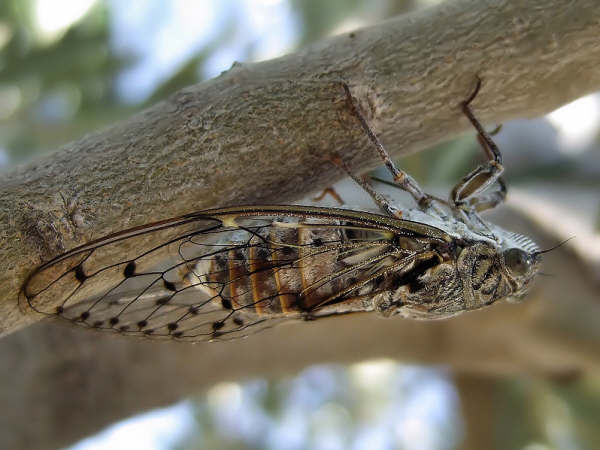
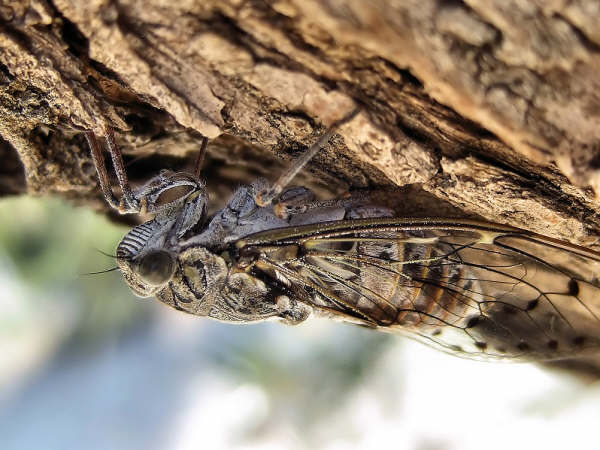
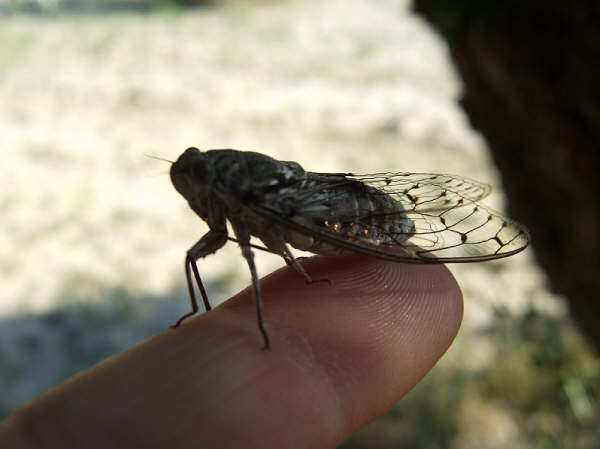
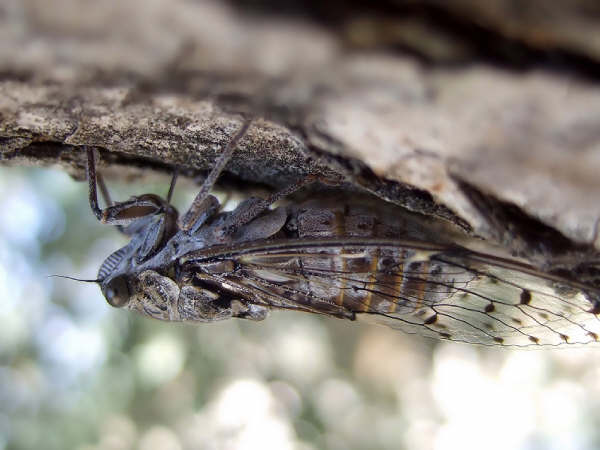
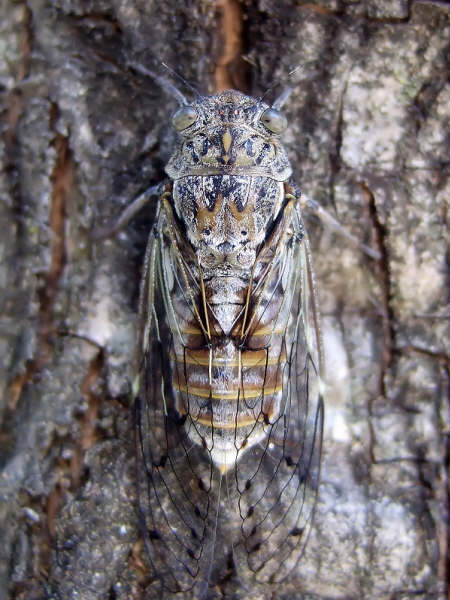
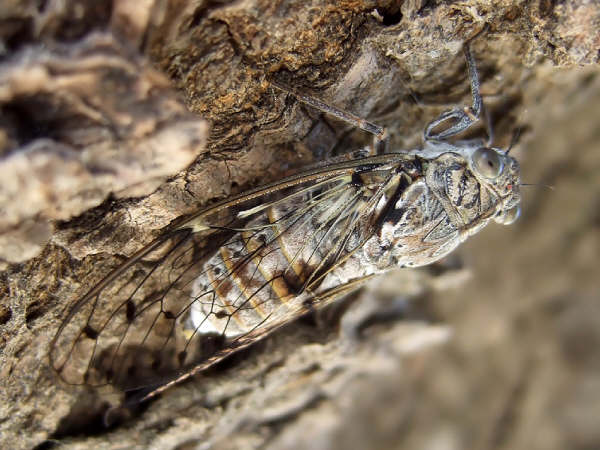
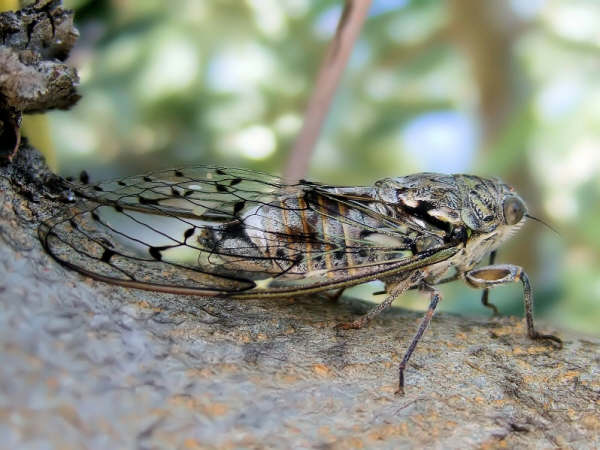
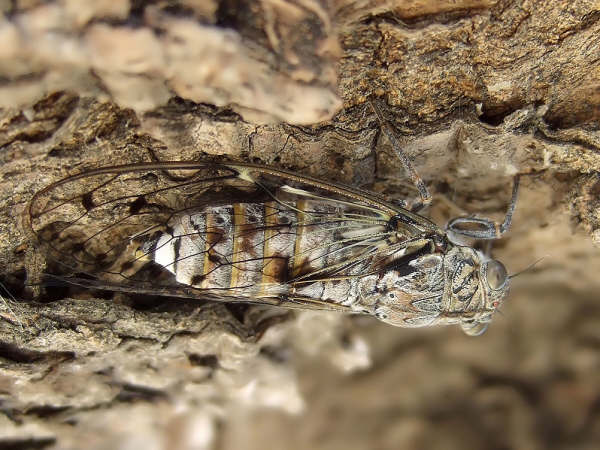
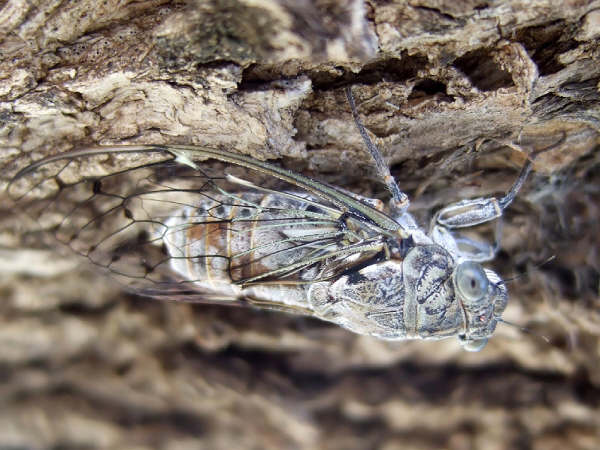
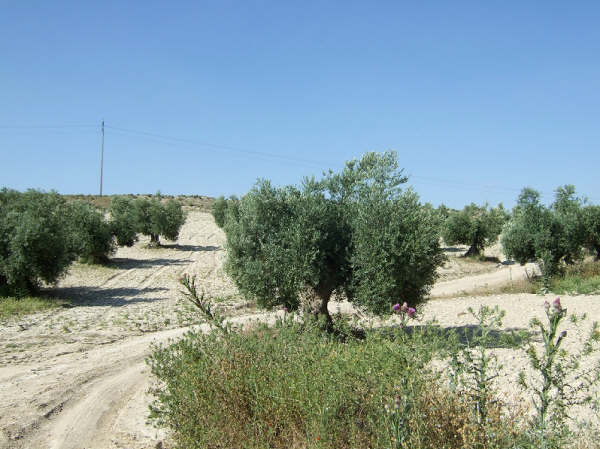
Dedicated to cicadas, the most amazing insects in the world.
Cicada orni (Ash Cicada) photos by Iván Jesús Torresano Garcia from Spain.










Euterpnosia chibensis photos by Osamu Hikino. Japan.
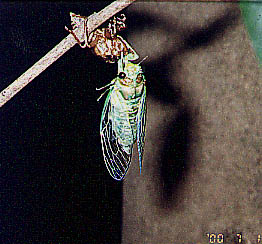
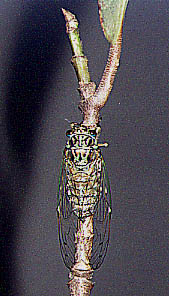
Cicada orni photos by Iván Jesus Torresano García. Spain. 2014.
Cicada orni (Ash Cicada) blend in so well with their habitat. They’re very hard to see on the bark of a tree.
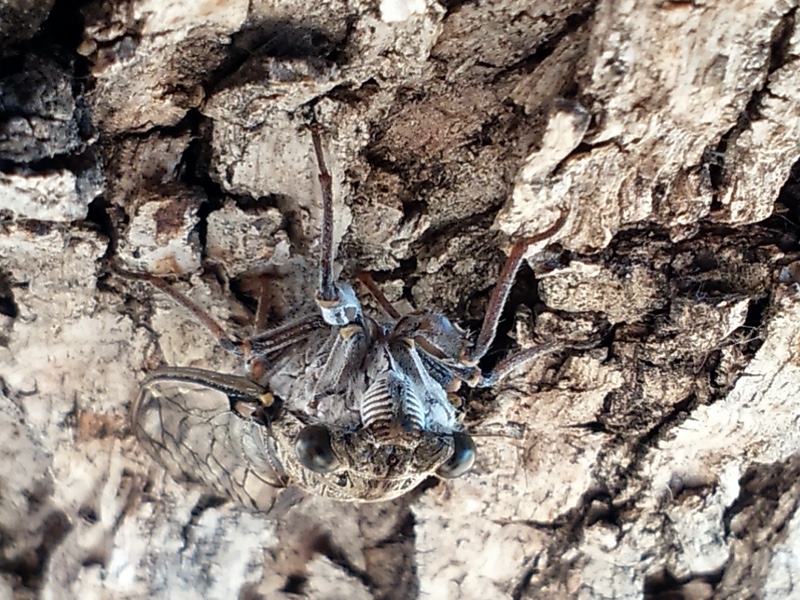
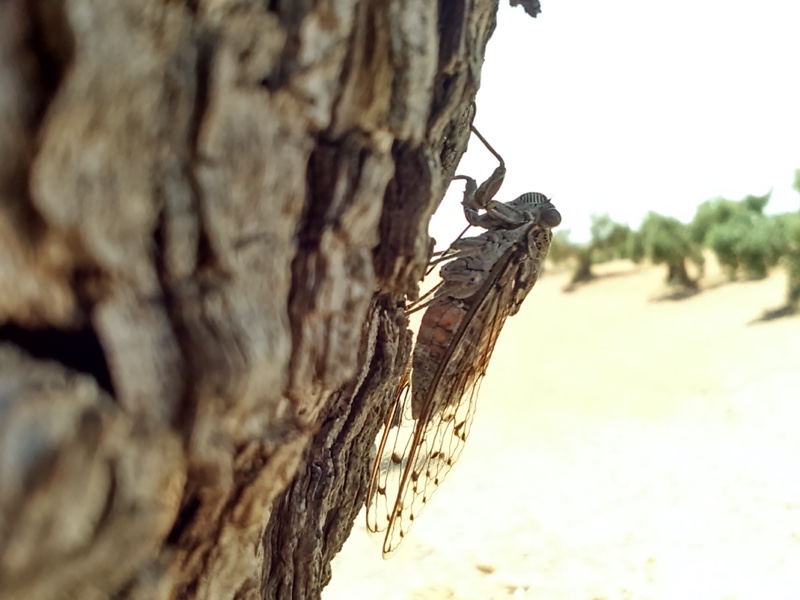
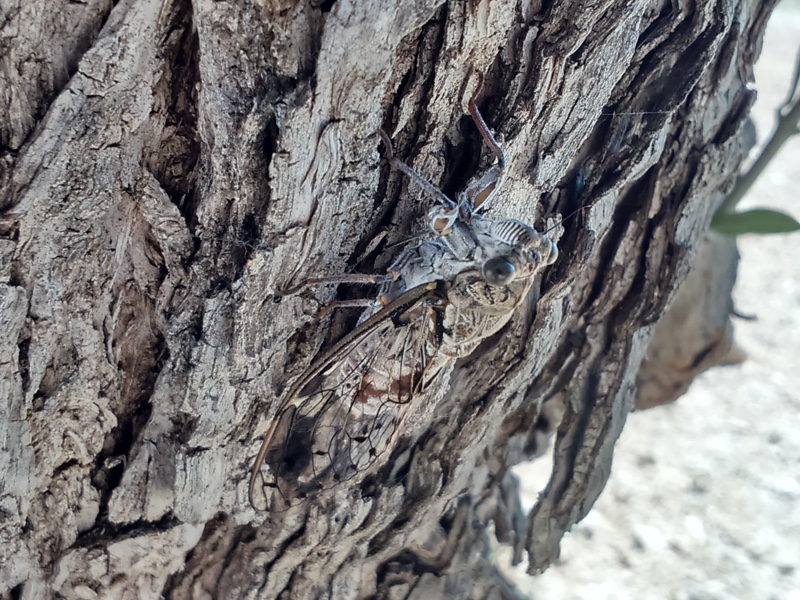
Joe Green’s Neocicada hieroglyphica photos from 2007, Florida, part 2:
Joe Green’s Neocicada hieroglyphica photos from 2007, Florida, part 1:
Pomponia dolosa is a cicada found in Thailand and Vietnam.
Photo by Michel Chantraine:
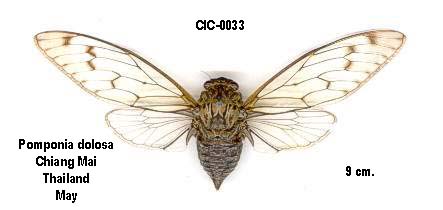
Scientific classification:
Family: Cicadidae
Subfamily: Cicadinae
Tribe: Cicadini
SubTribe: Psithyristriina
Genus: Pomponia
Species: Pomponia dolosa Boulard, 2001
Pomponia linearis is a cicada found in India.
Photo by Raghu Ananth taken in Bhagamandala, Coorg, India:
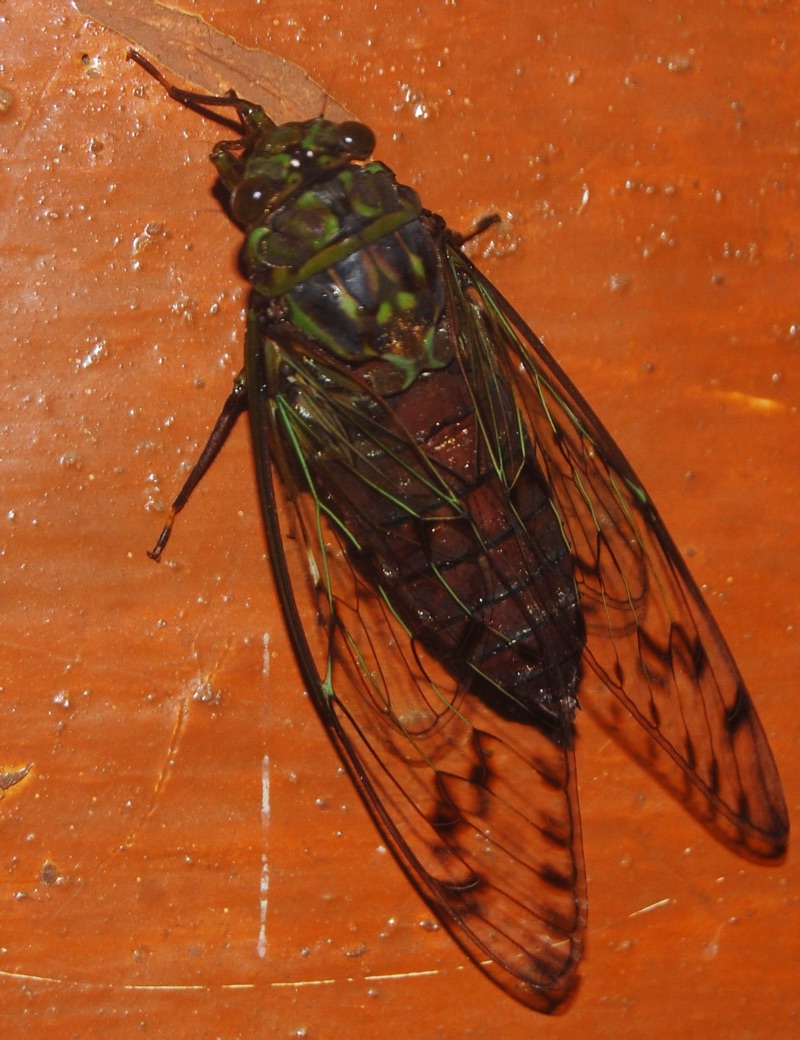
Scientific classification:
Family: Cicadidae
Subfamily: Cicadinae
Tribe: Cicadini
SubTribe: Psithyristriina
Genus: Pomponia
Species: Pomponia linearis (Walker, 1850)
For more information about this cicada, visit Cicadas of India.
Yasumasa Saisho of the Cicadae in Japan website left a note on Facebook about this cicada:
Pomponia linearis is currently considered to contain several species (complex), for example, the population of Taiwan and Japan has been changed to Pomponia yayeyamana. See Duffels and Hayashi (2006) Tijd. Entomol., 149, 189-201.
I’m putting this at the end. It is a description of Pomponia fusca which back in the 1800s was a “synonym” of Pomponia linearis, from A Monograph of Oriental Cicadas by W. L. Distant. 1889-1892. Read it on the Biodiversity Heritage Library website:
Head, pronotum, and mesonotum are greenish-ochraceous. Head with the anterior margins of the front, an irregular central fascia to vertex enclosing the ocelli, a large spot on the inner side of eyes, and the anterior lateral angle of vertex, dark olivaceous. Pronotum with a broad central longitudinal fascia, two large oblique spots on each lateral area, and a spot on the lateral margin, brownish-olivaceous. Mesonotum with seven brownish-olivaceous spots; situate two central and obconical, between which is an arrow-shaped discal spot, a small spot on each side of the two central ones, and a long spot on each lateral area, two small spots of the same color in front of each anterior angle of the basal cruciform elevation. Abdomen pale castaneous with ochraceous pilosity. Head beneath, sternum, legs, and opercula pale greenish ; upper and apical areas of face, a spot between face and eyes, posterior margins of eyes, anterior tibiae, apices of intermediate tibiae, a spot near apices of femora, apices of anterior and intermediate tarsi, apex of rostrum, and a triangular spot between the intermediate and posterior coxae, dark fuscous. Abdomen beneath dark ochraceous.
Tegmina and wings pale hyaline ; tegmina with the costal membrane greenish, transverse veins at the bases of the second, third, fourth, fifth, seventh and eighth apical areas infuscated, and a marginal series of small fuscous spots situate at the apices of the longitudinal veins to apical areas; the venation is otherwise ochraceous, sometimes replaced by black; basal cell and claval margin brownish-ochraceous.
Wings with the venation brownish-ochraceous; claval margin darker in hue.
Long. excl. tegm.

Cicada pennata (Distant, 1881) is a cicada found in Guatamala.
Cicada pennata (Distant, 1881) was formerly known as Tettigia pennata.
Scientific classification:
Family: Cicadidae
Subfamily: Cicadinae
Tribe: Cicadini
SubTribe: Cicadina
Genus: Cicada
Species: Cicada pennata (Distant, 1881)
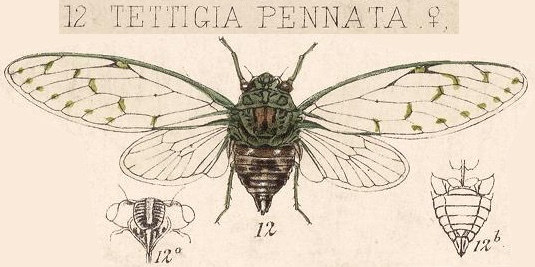
The image says Tettigia pennata, but the newest name of this cicada is Cicada pennata.
Species description by W. L. Distant:
Head, pronotum, and mesonotum greenish. Head with the frontal marginal angles, a transverse streak on lateral margins, inner margin of eyes, and area of the ocelli black; ocelli red. Mesonotum with a central longitudinal suboblong spot, rounded posteriorly and angulated anteriorly, on each side of this a short oblique streak behind eyes, and a D-shaped spot near each lateral margin black. Mesonotum with four large, central, and somewhat irregular black-bordered obconical spots, a black spot on each lateral margin, and two small spots of the same colour in front of the basal cruciform elevation. Abdomen above dull testaceous, with the basal angles and anal appendage greenish, somewhat thickly clothed with white pile. Body beneath greenish; transverse striae to face, bases and apices of coxse, apex of rostrum, segmental incisures, and inner margins of anal appendage black. Legs greenish, apices of femora black, apices of tibiae and tarsi dull testaceous, tarsal claws black. Tegmina pale hyaline. Neuration of basal half greenish, remainder fuscous ; base of first ulnar area, transverse vein at base of second ulnar area, a central spot on the longitudinal vein enclosing third ulnar area, and transverse vein at base of eighth apical area, and claval margin black ; a prominent white opaque spot at base of first ulnar area. Anastomoses, and a submarginal row of spots situated on veins, pale fuscous. Wings pale hyaline; veins fuscous, with some of the discal ones greenish.
The face is globose, strongly and transversely striate, with a central longitudinal sulcation; rostrum reaching the posterior coxae; head small, with the eyes very globose, and much narrower than base of pronotum.
Long. 17 millim., exp. of tegm. 66 millim.
Neocicada australamexicana Sanborn & Sueur, 2005 is a cicada found in Mexico. There’s a very similar cicada in the United Stated called Neocicada hieroglyphica hieroglyphica (Say, 1830).
Neocicada australamexicana was formerly known as Tettigia hieroglyphica.
Scientific classification:
Family: Cicadidae
Subfamily: Cicadinae
Tribe: Cicadini
SubTribe: Leptopsaltriina [slender Harp player in Greek]
Genus: Neocicada
Species: Neocicada australamexicana Sanborn & Sueur, 2005
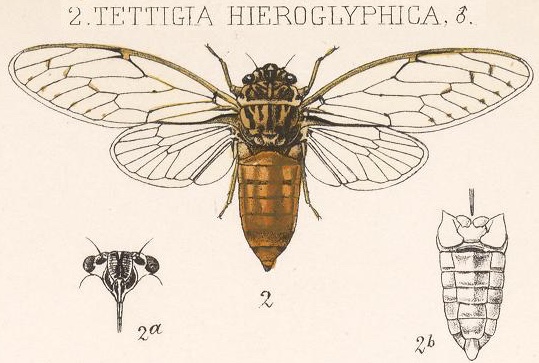
The image says Tettigia hieroglyphica, but the newest name for this cicada is Neocicada australamexicana.
Cicada pallida Goeze, 1778, is a cicada found in Mexico.
Scientific classification:
Family: Cicadidae
Subfamily: Cicadinae
Tribe: Cicadini
SubTribe: Cicadina
Genus: Cicada
Species: Cicada pallida Goeze, 1778
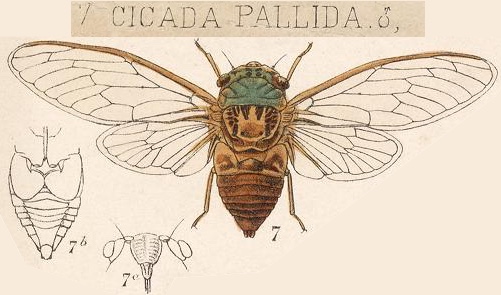
Cicada pallida species description by W. L. Distant:
Head pale greenish, with two small transverse spots on center of front, two larger ones near inner margins of eyes, and two large lunate spots, partly surrounding the two posterior ocelli, black. Pronotum pale greenish and unicolorous. Mesonotum ochraceous, with two large obconical spots commencing on anterior margin, on each side of these a smaller and more oblique spot of the same description, a broken submarginal longitudinal fascia, and two small rounded spots on posterior portion of disk fuscous. Abdomen above ochraceous. Head beneath pale greenish. Sternum, legs, opercula, and underside of abdomen ochraceous. Tegmina pale hyaline; venation of about basal two thirds ochraceous, that of apical third fuscous. Wings pale hyaline; basal half of venation ochraceous, apical half fuscous.
The face is large, robust, and convex, faintly transversely striate, and with a faint central raised longitudinal line. Opercula rounded, divergent, meeting only at anterior angles, posteriorly reaching apex of first abdominal segment. Tympana somewhat large and prominent. The body alone is sparingly pilose, the frenum most densely so.